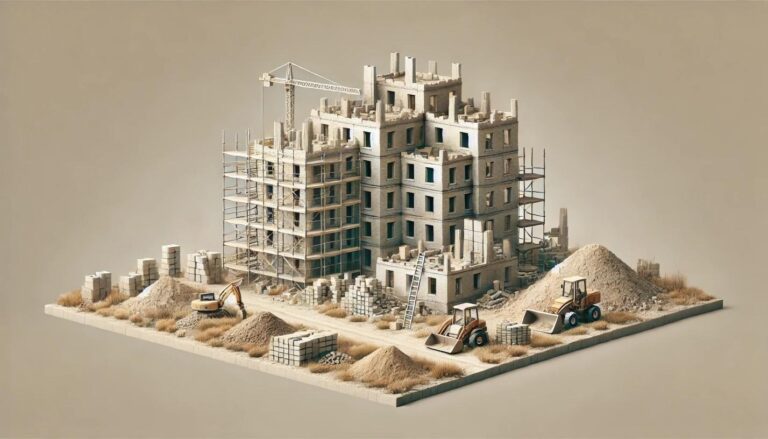The construction industry plays a pivotal role in economic development, yet it’s also one of the largest contributors to global environmental degradation. From resource extraction and energy consumption to emissions and waste, traditional building practices leave a heavy footprint. In an age of rising temperatures, urban air pollution, and dwindling natural resources, rethinking construction methods is not just an option—it’s a necessity.
While efforts like green building certifications and net-zero targets are pushing the industry toward more sustainable models, a large proportion of projects still rely on conventional methods that prioritise cost and speed over sustainability.
The Core Environmental Challenges
Carbon Emissions
Concrete production alone accounts for roughly 8% of global carbon emissions, largely due to the energy-intensive process of cement manufacturing. When combined with transport, steel, and glass, the materials used in traditional construction have a staggering environmental impact.
Resource Depletion
The extraction of raw materials—sand, gravel, limestone—places immense pressure on ecosystems. Deforestation, soil erosion, and water scarcity are direct consequences of unchecked material sourcing.
Construction Waste
According to recent UK data, the construction sector generates over 60 million tonnes of waste annually. A significant portion ends up in landfills due to lack of recycling infrastructure or poor site management.
Water Use and Pollution
Excessive Consumption
Construction activities consume large volumes of water, particularly during curing, dust suppression, and cleaning. In water-stressed regions, this can exacerbate local shortages.
Site Runoff
Chemical-laden runoff from sites often contaminates local water sources. Sediments, oils, and concrete washout can alter pH levels, harming aquatic life.
Noise and Air Pollution
Urban Disruption
In densely populated areas, construction contributes significantly to noise pollution, affecting public health. Dust and emissions from diesel machinery degrade air quality, aggravating respiratory conditions.
Embodied Energy
Traditional buildings are often designed with little regard for operational or embodied energy. This results in long-term inefficiency, higher energy bills, and greater environmental cost over the building’s life cycle.
A Shift Toward Sustainability
Material Innovation
Sustainable alternatives are now available—from low-carbon concrete mixes to hempcrete, recycled steel, and mass timber. These options reduce emissions, often improve insulation, and are increasingly cost-competitive.
Digital Platforms for Smarter Building
Real-time data platforms track concrete curing, material efficiency, and environmental metrics during construction. These tools allow for mix optimisation, which can reduce cement usage by up to 20%, leading to both environmental and financial benefits.
Case Study: A Smarter Construction Approach
A mixed-use development in Birmingham integrated digital concrete monitoring and waste minimisation strategies. By using embedded sensors and smart logistics, the project team reduced cement consumption, avoided over-ordering materials, and diverted 85% of site waste from landfill.
Legislative Pressure and Market Demand
Tougher Regulations
The UK and EU are tightening legislation around embodied carbon and site emissions. New requirements will increasingly affect planning permissions, funding, and public procurement decisions.
Consumer Expectations
Tenants and buyers are demanding sustainable features—energy efficiency, healthy materials, and transparency in sourcing. Developers that fail to adapt risk losing market share.
The Role of Education
Many construction professionals still lack exposure to sustainability principles. Industry-wide upskilling and cross-disciplinary collaboration are essential to accelerate change.
Conclusion
Traditional construction methods have served us well for centuries—but their environmental cost is no longer justifiable. Modern technologies and materials offer a smarter way forward. The key lies in education, innovation, and a willingness to build not just faster, but better.


